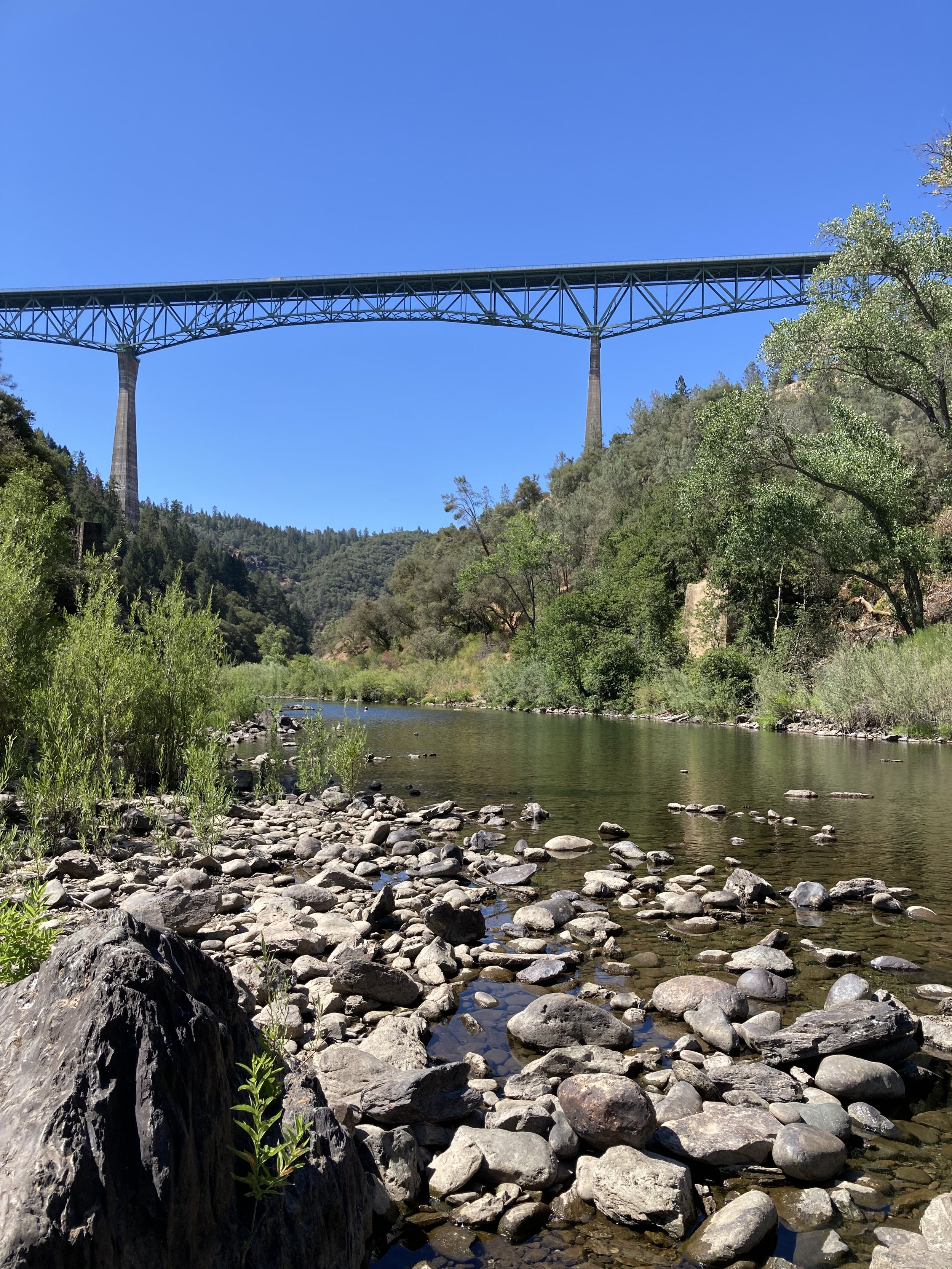The American River at Forest Hills
The American River at Forest Hills, California, 2022 — Ink, watercolor, algae pigment, and forest fire charcoal on paper
The American River is a short river, flowing from the Sierra-Nevada mountains to the Sacramento River in 30 miles. Heavily associated with the California gold rush, this river consists of three forks and is a popular recreation site today. The database lists this sample by its location rather than its body of water, labeled Forest Hill or Forest Hills, spelled Foresthill currently.
Californien 1871. Forest Hill. N. 15 Whitney Abhandl. d. Akad. 1875 p.139 3058
Foresthill is now a census-designated place and is located along the American River, so my guess was this sample was likely from the American River area. The sample is listed as ‘biolithe’ indicating this was likely a dry soil sample from the area.
This sample has two dates, 1871 and 1875 associated with it, along with the name “Whitney” which I believe refers to Josiah Whitney, the leader of the California Geological Survey which took place from 1860-1868. These collection dates and locations align as a likely source for this sample.
Detail of the California Geological Survey map which shows Forest Hill mapped northeast of Sacramento. Note the spelling here matches the database spelling.
Foresthill is the site of multiple mining boom towns and historical sites with names like Eldorado, Yankee Jims, Gold Hill, and other hopeful names. I took my sample from the north fork of the American River under the Foresthill Bridge at Auburn State Recreation Area.
Other samples associated with Whitney and 1871 date include gold sand samples, the Pitt River, and some locations in present-day Napa Valley. This leads me to believe these were all taken by Whitney at the same time and later given to Dr. Ehrenberg.
Sample site on the American River featuring a collection for filamentous green algae and sediment
Dr. Ehrenberg’s observations
California organisms observed by Dr. Ehrenberg. Image used with permission from the Natural History Museum of Berlin.
Unfortunately Dr. Ehrenberg’s collection does not have extensive illustrations from these samples. Many of the assemblages we have in the collection were produced for earlier published works like Mikrogeologie, published in 1854. Dr. Ehrenberg died in 1876 and since these samples are dated 1871 and 1875, these would be come to him late in his life and career.
All Californian illustrations seem to depict marine diatoms from earlier sample collections, so direct specimen study will be needed to compare the samples.
My observations
Since the artistic record here has holes, my samples cannot be directly compared to the historical illustrations. That said, these samples show what looks to be a very distinct and strong California microbiome with the presence of Staurosira, Cymblella mexicana, Epithemia, and Ulnaria. To me, this is symbolic of the area and its microbiology.
View of the American River under the Forest Hill Bridge near Cool, California.











